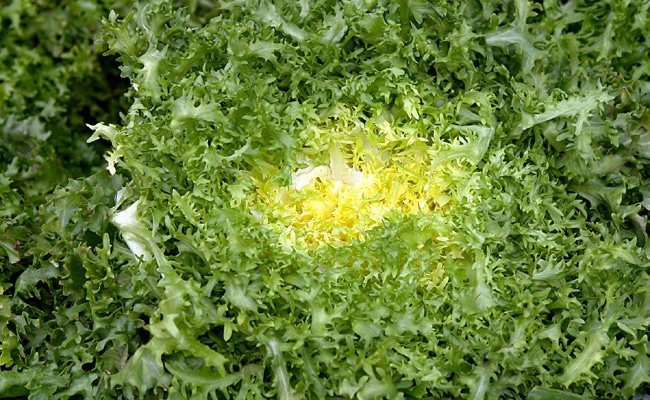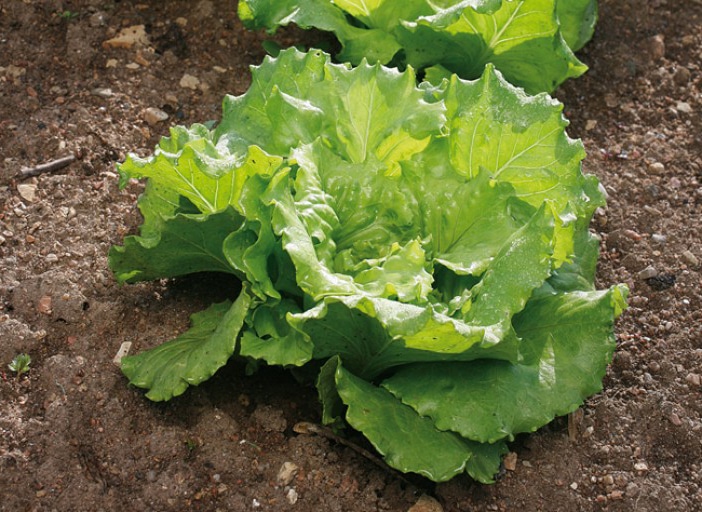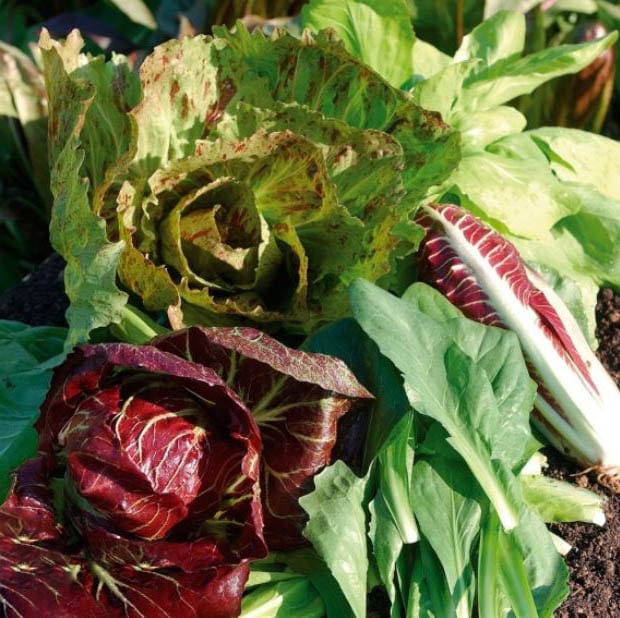When to sow chicory?
The sowing period varies from May to mid-August. It is sown in warm soil, preferably at 15 ° C.
Regarding wild chicory, May seedlings are harvested as leaves to be cut. Seedlings in July and August give the following spring and in the form of tight apples with tender leaves.
For a longer harvest, you can spread your seedlings every 15 days.
The emergence is generally done in 4 to days and you count between 3 and 4 weeks to obtain the plants.
Which varieties to choose?
The chicory that you can grow are all from two species: Chicory endiva, which includes curly and escarole, and Chicory intybus, which includes wild chicory including those that have been cultivated and selected. This species includes so-called industrial chicory that is grown for its root and endive.
- Curly chicory (chicorium endivia)
- The chicory of MeauxIt comes in the form of a large apple with a full heart. Its green-blond foliage is finely divided and is very frizzy. It sows in June and July and is harvested during the summer and fall period, three months after sowing. It resists perfectly to drought and heat and withstands bad weather conditions. The heart whitens spontaneously.
- The big Pancalière: It has a yellow heart and a rather big and tight apple, its leaves are finely cut, pale green, its ribs are fleshy and slightly tinged with pink. It is an early variety, it sows from June to early August and is harvested from late summer until autumn or winter, in the south of France. It is a traditional variety of the nineteenth century, productive and rustic. Its apple whitens naturally, it is very resistant to drought and heat.
- Walloon: Its leaves are cut and not very curly, its apple is voluminous and vigorous, its heart is tight and golden yellow. It is a semi-early that you sow from July 15 to mid-August and you harvest 3 months later, in autumn and winter. It is the most rustic curly, it resists frost perfectly and bleaches easily.

- Chicory (Chicorium endiva) :
- Cornet of Bordeaux: its apple is generous, elongated, crisp and tender. Its foliage is ample, intense green and it winds like a cornet and whitens naturally. It is a medium-late variety that sows from July 15 to early August and you harvest between November and January when the winters are mild, south of the Loire. It has a high resistance to cold and supports temperatures down to -5 ° C.
- The blonde with a full heart: its blond leaves are broad, curly, crisp and not very bitter. Her apple and tight and well formed. It is early and has a rapid growth, it is grown exclusively in summer and autumn. Sowing is done between June and July and harvest from October to December. It resists rot perfectly, but on the other hand, it fears the cold.
- The giant market gardener: she has a very big apple heavy and dense and very blonde. Its leaves are erect, broad and fleshy on the ribs. It forms a very tight heart that bleaches easily. It will be sown between mid-June and early August in the west and late August in the south. It is harvested in autumn and early winter in the north and all winter in the south. It is a most cultivated variety, vigorous and traditional. It perfectly supports the first frosts.

- Wild chicory (chicorium intybus):
- Sugar bread : the apple is elongated, the loose leaves curl to take the shape of a large oval cornet with a soft heart, and a slightly bitter taste. It is a late crop that sows between May and August and is harvested from August to April and throughout the winter. It is very popular in winter, it resists perfectly cold and frost removes bitterness and makes it more tasty. It is easy enough to keep.
- Red of Verona: it is in the form of a small red and white apple, oval and very dense. It has large red burgundy leaves. It is semi-early, you sow it in July and harvest between October and March. If you cut it in late summer, the leaves grow back to form an apple that will be harvested in winter or spring. It is an old Italian variety that resists cold.

What to do before sowing chicory?
To prepare the planting of chicory, the soil must be clean and free of roots or weeds. You will need to clean it carefully and dig. You must also loosen the soil and enrich it with humus.
How to sow it?

You can plant chicory in a nursery or directly in place, in lines spaced 40 cm apart. You then cover the seeds with 1 cm of sifted compost so as to favor the emergence.
If you want to prevent chicory from rising to seed, germination must be rapid. She likes heat between 15 and 25 ° C. This allows him to lift faster. If you live in a region a little cool, it is better to sow under shelter (chassis, mini greenhouse, tunnel …) especially early in the season.
After one month after sowing, you can thin and you can also transplant 25 to 50 cm apart depending on the variety.
Transplanting is a very interesting operation that allows you to get stronger feet, but the problem is that they can go to seed easily and prematurely. It is necessary to avoid it that the feet are sheltered from the sun at the moment when they are transplanted and that they never lack water. When you have torn the seedlings, you have to cut the root tips and the upper third of the leaves.
Plant without burying the base of the leaves preferably when the weather is cloudy and shade the seedling with a shade sail or overturned crates for example.
Water copiously this avoids the rise in seeds.
To save space and water, but also to keep the ground covered, plant chicory between cauliflower: these two vegetables have almost the same needs and they plant at the same time. We can put them after the potatoes for example. It is recommended to keep a delay of 2 or 3 years before replanting scaroles or curly chicory in the same place. The rotation period is 3 or 4 years for wild varieties.
Where to plant chicory?
Chicory appreciates soils rich in humus and furniture, rather fresh and heavy, a little alkaline and moderately smoked, but it can also adapt to different soils.
She likes heat, so it is best to plant it in the sun.
How to maintain it?
It is best to hoe in order to keep a Permeable and well ventilated soil.
To maintain the freshness of the soil, straw generously from July. A thick mulch is particularly recommended for late varieties of escarole and curly leaves. You can also put a wintering veil or transplant them in the cellar to make them whiten.
Blanch the hearts of the escaroles and chicory putting them 15 days before harvest in the dark avoids too much bitterness:
Gather all the leaves together and bind them with raffia. You can also cover with an overturned pot of earth or an opaque bell. Plug the drain hole of the pot and put a hold below to ventilate.
To prevent rot, wait until the leaves are dry before bleaching. Do not do it in advance, but when you need it.
Low temperatures with even light frost help to remove some of the bitterness and the leaves are only better.
How to water chicory?
Chicory regularly watering, because it is necessary to keep a damp ground especially during the heats of the summer. However, be careful not to spray the leaves to prevent rotting.
Harvesting chicory: when and how?
You harvest chicory when you need it until frost and curly jellies and until spring for wild chicory varieties.
You will pick the escarole and the curly when they are very well developed. Wild chicory picks when they are well headed.
It is necessary to cut the foot under the tuft of leaves with a knife: lateral discharges can then develop.
Its conservation : like all salads, chicory does not keep. It must be consumed within two to three days after harvest and best immediately. To keep it, keep it away from light and cool.
Diseases of chicory and what to do?
Chicory is quite resistant, but it does not like moisture on the leaves which risks making it rot. To avoid it, do not water them and you can perform dusting of rock powder.
She is also afraid of slugs and snails who devour the young plants and make the heart of the salads rot when they are well developed. They must be picked up in order to keep them away. These animals are mostly attracted to the plants when they are still young, monitor them regularly.
Even more plantations:









